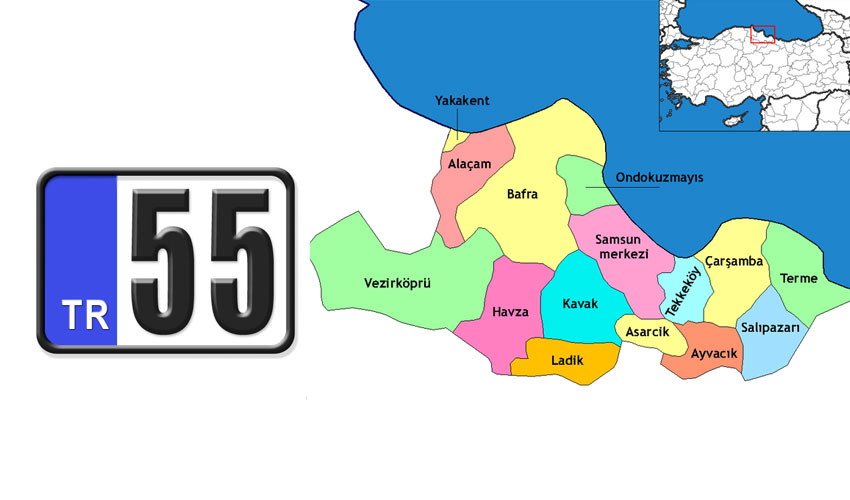55 Plaka Nerenin? 55 Hangi Şehrin Plakası? Samsun İlçeleri Plaka Harfleri

55 Plaka Nerenin? 55 Hangi Şehrin Plakası? Samsun İlçeleri Plaka Harfleri. İl plaka kodları, illerin alfabetik sıralamasına göre aracın takibinin yapılmasına ve birbirinden ayırt edilmesi için verilen kodlardır. İl plaka kodu aracın hangi ile kayıtlı olduğunu gösterir. Plakadan sonra başlayan harfler ise aracın kayıtlı olduğu ilçeye göre değişir.
55 Plaka Nerenin? 55 Hangi Şehrin Plakası?

İlk olarak 1893 yılında Fransa’da uygulanmaya başlayan taşıt plaka kodu uygulaması 27 Eylül 1962 tarihinde yayınlanan bir yönetmelikle günümüzdeki uygulamaya geçilmiştir. Plaka kodu uygulamasının amacı karadaki motorlu taşıtların takibinin yapılmasına ve birbirlerinden ayırt edilmelerine yarayan bir kimlik sistemidir. Türkiye’nin uluslararası plaka kodu 1923 yılında “TR” olarak belirlenmiştir.
Plaka kodları illerin alfabetik olarak sıralanması göre sınıflandırılır. Alfabetik harf sıralaması olarak elli beşinci ilimiz Samsun olduğu için ülkemizin elli beşinci plakası 55 Samsun ilimize aittir.
Bu nedenle 55 Plaka Nerenin? sorusunun yanıtı:
55 plaka kodu ülkemizin Samsun iline aittir.
Samsun İlçeleri Plaka Harfleri

İl plaka kodları sonrasında başlayan harfler aracın kayıt olduğu ilçelere göre değişmektedir. Samsun ilimizin ilçelerinin plaka harfleri aşağıdaki gibidir.
Samsun Merkez Plaka Harfleri
AC, AZ, C, D, DA, DZ, EA, ES, EV, EZ, FB, GS, K, LA, LZ, M, MA, SA, SZ, T, TS
Samsun – 19 Mayıs Plaka Harfleri
C, D, K, M, T, YZ
Samsun – Tekkeköy Plaka Harfleri
C, D, K, M, T, VA, VZ
Samsun – Ladik Plaka Harfleri
C, D, K, M, T, ZA, ZZ
Samsun – Bafra Plaka Harfleri
C, D, ET, EU, FH, FS, HA, HE, K, M, NA, NV, T, K, JA
Samsun – Çarşamba Plaka Harfleri
C, D, FA, FC, FF, K, M, RA, RZ, T
Samsun – Vezirköprü Plaka Harfleri
C, FT, FZ, HN, HR, K, M, PA, PZ, T
👉 Öğrenci Gündemi’ni İnstagram’dan Takip Etmek İçin Tıklayınız




